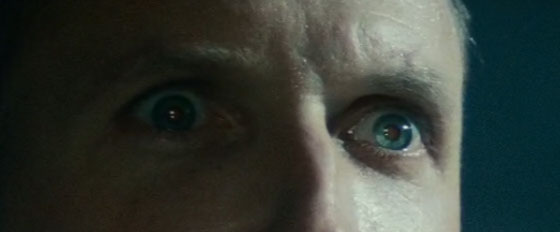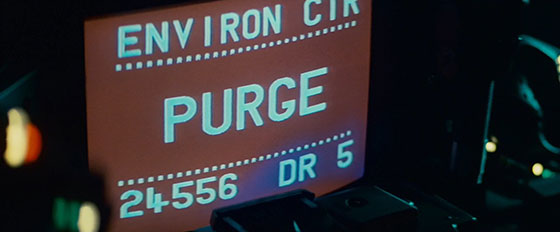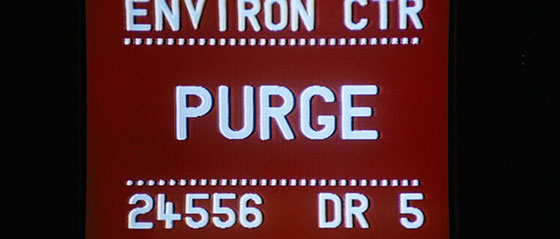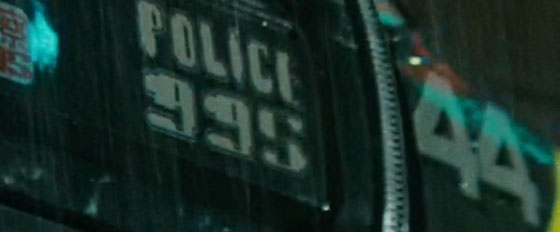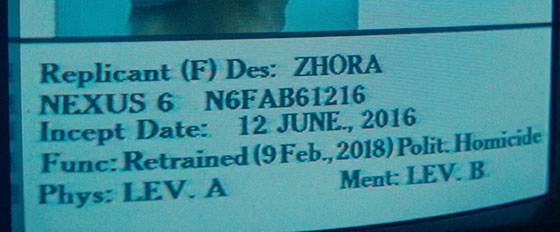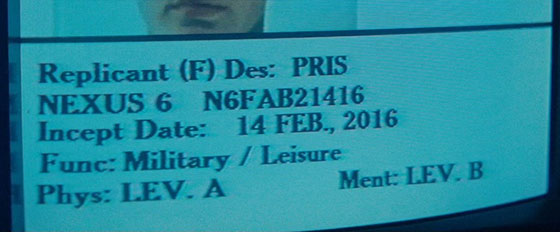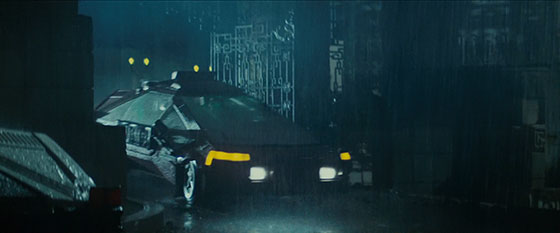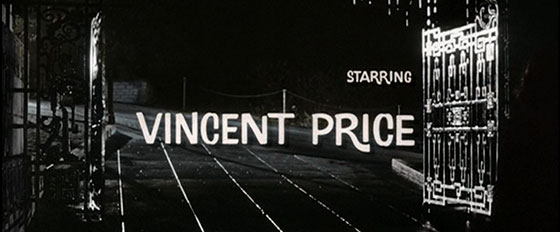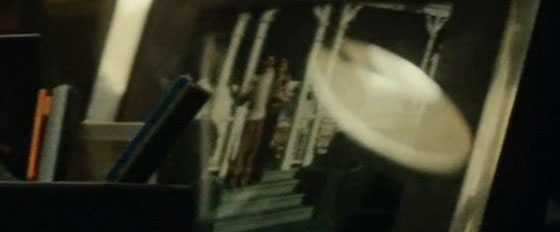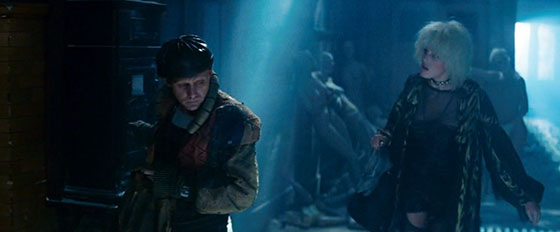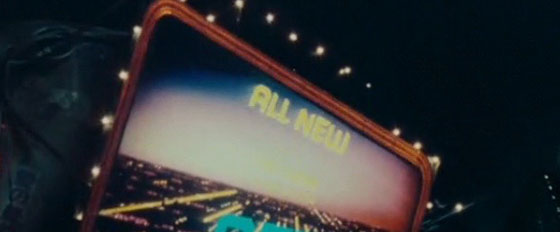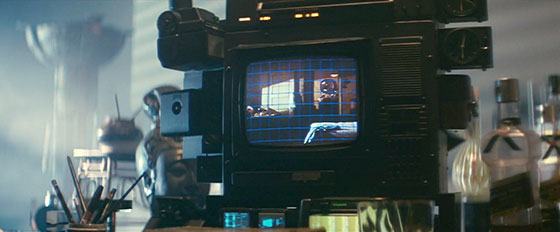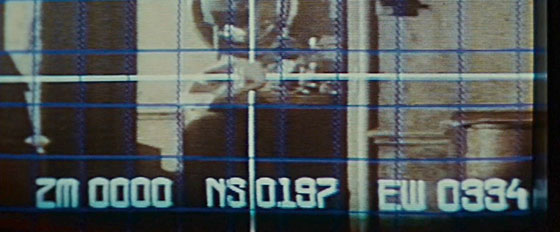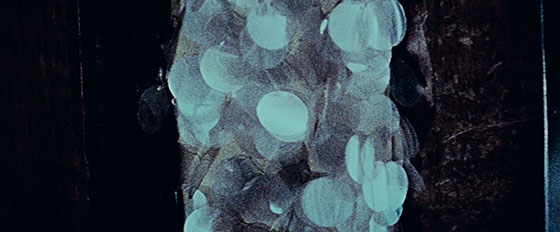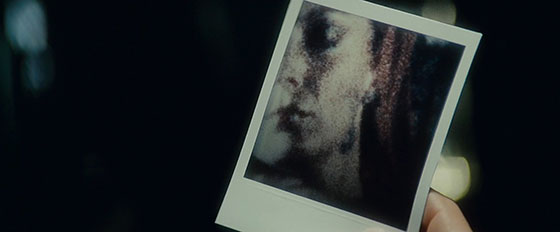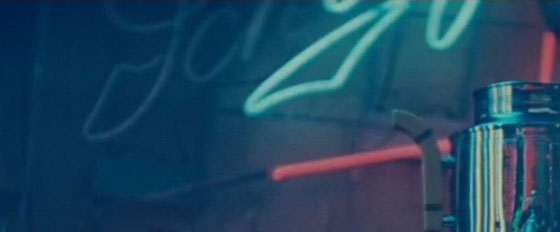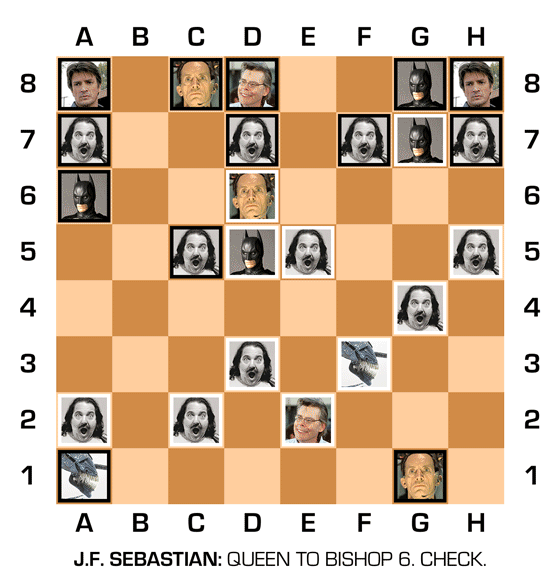After studying Alien in intimate detail, I figured I should spend some time taking a look at Ridley Scott‘s other classic sci-fi movie, Blade Runner. Based on Philip K. Dick‘s 1968 novel, Do Androids Dream of Electric Sheep?, Blade Runner cements Scott’s reputation for gritty, tech noir science fiction.
(As with my previous articles, I should note that there are spoilers aplenty throughout the next 5,000 words. If you don’t want to know when Blade Runner‘s sole appearance of Eurostile Bold Extended occurs, look away now.)
Blade Runner‘s opening crawl is distinctly un-futuristic in its choice of font. It uses Goudy Old Style – designed by Frederic W. Goudy in 1915 – as part of a veritable typographic cornucopia:
Within five-and-a-bit paragraphs, we are treated to several inconsistently spaced examples of small caps (all of which make me think of death talking inside my head), and five — count them! — examples of particularly chunky em dashes. (Thankfully, they do not follow the freaky American style of removing—for no reason at all—their surrounding spaces.)
My favorite aspects of this opening crawl, however, are the arbitrary examples of Mid-Sentence Capitalized Words, as popularized by A. A. Milne and P. L. Travers:
With the opening crawl’s typographic anomalies fresh in our minds, it’s time to meet our first suspected replicant. Leon, a potential NEXUS 6, is being tested with a Voight-Kampff machine in the offices of the Tyrell Corporation. We know we’re in the offices of the Tyrell Corporation, because the chairs have TYRELL CORP. stenciled on the back of them, in what might be Akzidenz-Grotesk Extended:
As we discovered in both Alien and Moon, omnipresent corporate branding is the single most important sign of a successful international conglomerate.
The Voight-Kampff machine measures contractions of the iris muscle to gauge the subject’s empathetic response to a range of questions. We see a close-up of one of Leon’s green eyes as the test is administered:
This is odd, given that Leon’s eyes are blue:
The Voight-Kampff test is also administered to Tyrell’s niece, Rachael, later in Blade Runner. We see a close-up of one of Rachael’s green eyes as the test is administered:
This is odd, given that Rachael’s eyes are brown:
Thankfully, this mystery is easy to explain: the eyes we see on these Voight-Kampff screens are taken from stock footage by Oxford Scientific Films, and not from an actual replicant. This is almost certainly because the eyes of a real replicant are notoriously hard to film without a bad case of red-eye effect – a fact that Scott struggled with throughout the making of Blade Runner. Indeed, despite the efforts of modern film restorers, even the Final Cut of Blade Runner shows an unavoidable example of this phenomenon the very first time we meet Leon:
The same is true when we meet Rachael (purportedly Tyrell’s niece, but later exposed as an unsuspecting replicant):
The trademark tinge is also there when Fliss is reunited with Roy Batty in J.F. Sebastian’s apartment:
Tyrell’s artificial owl provides a particularly glowy example:
Hell, even a top-of-the-range NEXUS 6 like Roy Batty suffers from a bad case of the red-eye:
This problem surfaces time and time and time again throughout the film. Given the otherwise incredible realism of the (entirely animatronic) replicant “actors” in the movie, it’s unfortunate that the producers couldn’t find a way to work around such a simple photographic bugbear.
Perhaps the most inexplicable example of this phenomenon, however, is a blurry background shot late in the movie, featuring central protagonist (and definitely-not-a-replicant) Rick Deckard, played by Harrison Ford:
How strange! I’m sure it won’t turn out to be significant.
The first time we meet Deckard, he’s sat in the Los Angeles rain, idly reading a newspaper. The headline of this newspaper is FARMING THE OCEANS, THE MOON AND ANTARCTICA, in what looks like Futura Demi:
This isn’t the first time we’ve heard about lunar business endeavors. As we saw in Moon, NASA was accepting applications to mine the moon as far back as January 2014. Things have moved on even further since then, with the Google Lunar X Prize offering $20m to the first privately funded team that can land a robot on the Moon, travel more than 500 meters, and transmit back high definition images and video. By the end of 2015, sixteen teams had registered in the competition, with craft names such as Moonraker, Tesla, Sagan, and Tetris. Indeed, as of when this article was published, the Moon Express and Space IL teams had launch dates confirmed for 2017. The Lunar X Prize means that farming the moon for gold, cobalt, iron, palladium, platinum, tungsten and Helium-3 is a genuine possibility.
Here’s a close-up shot of that newspaper prop, from an on-set photo of Harrison Ford and Ridley Scott:
The subtitle reads WORLD WIDE COMPUTER LINKUP PLANNED, in what looks like Optima Bold. While the idea of a World Wide Computer Linkup might seem passé as we approach 2019, it was still very much unusual in 1982 when Blade Runner was released. Indeed, it wasn’t until March 1982 that the US Department of Defense, creators of pre-Internet network ARPANET, declared TCP/IP as the standard for all military computer networking, pretty much kick-starting what we know as the modern-day Internet of 2016.
Of course, if you’re going to set up business on the moon, you’ll need something a bit smarter than the simple terrestrial Internet we know here on Earth. Indeed, you’ll probably want some kind of Interplanetary Internet. By a strange coincidence, this is exactly what Vince Cerf and NASA have been working on, using delay-tolerant networking to forward bundles of data from spacecraft to spacecraft as and when they come into range. If you’d like to know more, here’s Vince explaining why the speed of light is too slow at a TEDx event in 2011. (We’ll excuse the Comic Sans in his slides, because he did after all invent the thing that’s letting you read this article.)
We see Deckard’s newspaper a couple more times in the movie. He’s reading it again while waiting for Zhora at the Snake Pit Bar, albeit inside-out:
Somewhat unexpectedly, the same day’s newspaper also appears as a makeshift drawer liner in Leon’s apartment:
But we’re getting ahead of ourselves. Back at the beginning of the movie, Deckard folds up his newspaper, and buys some tasty noodles from a street restaurant. As he noms the noodles, he’s approached by Gaff, a shady agent of the Los Angeles Police Department:
Gaff takes Deckard back to his car. It’s a Spinner, as indicated by the beautiful insignia on the door:
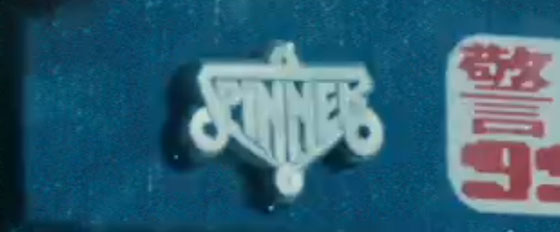
The Spinner’s landscape-orientation TV shows a display that may be familiar to regular TITF readers:
This ENVIRON CTR PURGE display is identical to the one we saw in Alien, just before the Nostromo exploded :
As if that wasn’t enough self-plagiarism, Ridley Scott also steals a second display from his earlier sci-fi masterpiece:
…which the more observant of you may recognize as Alien‘s shuttle disconnect sequence:
Perhaps most importantly of all, however, Gaff’s Spinner features Blade Runner‘s only reported instance of Eurostile Bold Extended, brought to you by the letters C, A, U, T, I, O, and N:
…and the number 44:
As the Spinner ascends into the LA rain, we see a particularly unusual piece of product placement behind it:
This is indeed a neon advertisement for popular American food processor manufacturer Cuisinart. Based on the shape of the food processor’s base, and its bottom-right neon-cyan rectangle, the robotic-looking icon you see here could well be the Cuisinart® Pro Classic™ Food Processor:
Cuisinart are far from the only 1980s company advertised in 2019’s Los Angeles cityscape, however. We once again meet American flag-carrier Pan Am, who in reality are just as defunct in 2019 as they were in 2001:

We also encounter popular carbonated sugar-water Coca-Cola:

…perennial halitosis-mitigator Dentyne:

…extra-terrestrial game manufacturer Atari:

…regularly product-placed watch manufacturer Bulova:
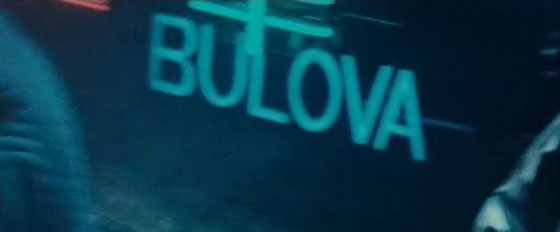
…alcoholic beverage brand Budweiser (no, not that one):
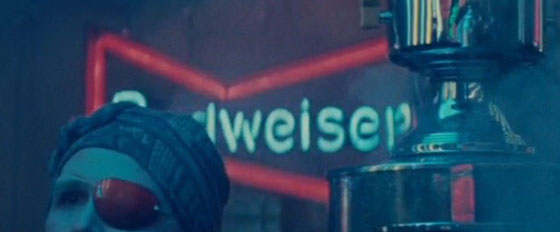
…and genius, irreverent, sexy mythical perfume brand Jōvan:

As Deckard and Gaff continue their flight through the Los Angeles skyscape, a technical-looking message tappity-taps itself onto a screen in Gaff’s Spinner. (Confusingly, this is a portrait CRT display – the landscape display we saw earlier is notable by its absence.)
This being Typeset In The Future, we are of course duty-bound to take a closer look at the on-screen text:

It’s a sign of my mis-spent youth that ALT / VEL / PTCH at the top of the screen immediately makes me think 1UP / HIGH SCORE / 2UP. However, the fuzzy text on the main body of the screen is even more interesting:

After spending an inordinate amount of time cropping, zooming, and enhancing these images, and squinting at them while holding Harrison Ford upside down, I have a theory as to what they mean. Here’s my rough transcription (with “xxxx” meaning “I really haven’t the foggiest”):
MICROPROCESSOR BASED ELECTRONICS PROVE OUR SYSTEM DOES WHAT NO OTHER INS TRUMENT CAN DO- IT PRODUCES INSTANT, ON THE SPOT RESULTS WITH xxxxx xxxx FILM, xxxx COLOR TRANSPARENCIES FOR BACKLITE
DISPLAYS AND OVER HEAD PROJECTION, 35MM COLOR SLIDES. 40 IMAGE CLASS MICRO RELATED AND SEQUENTIAL IMAGES CAN BE RE CORDED IN ORDERLY ARRAYS, ON A SINGLE SHEET OF xxxx INSTANT PRINT FILM. THE
It sounds like this text is describing an instant camera / image recording system, in the kind of terminology you’d find in an advertising brochure or user guide. (If any experts in microprocessor based electronics or color transparencies for backlite displays are reading this article, your insight would be gratefully appreciated.)
Gaff’s Spinner journey also introduces us to a recurring piece of typography from the movie’s backdrop. The Blade Runner production team re-used city background scenery in different configurations throughout the movie, which is why the glowing NUYOK sign seen here…
…is remarkably similar to the glowing sign for the YUKON hotel seen thirteen minutes later (also known as the temporary home of replicants Leon and Zhora):
Shortly after this revelation, the Spinner lands at an LAPD station:
…which turns out to be a smoke-filled version of LA’s real-world Union Station (for trains, not policemen):

Here, Deckard is briefed by Harry Bryant, captain of the LAPD’s Rep-Detect department, about the replicants he is meant to retire. We’re presented with the serial numbers and details of all four replicants, starting with Leon, who we discover is a combat replicant and nuclear fission loader:
(I really want this typeface to be Caslon, but despite everything else matching nicely, the top of the 6 is just wrong. I can only apologize for the discrepancy.)
Next up we meet Roy Batty, the Head Replicant in Blade Runner. We learn that Roy is trained in combat for the colonization defense program, and is a general all-round badass:
Roy is followed by Zhora, who someone at the Tyrell Corporation decided it would be a great idea to retrain in Political Homicide:
Finally we meet Pris, who unifies the sadly-not-as-disparate-as-one-might-hope disciplines of Military and Leisure (and was incepted on the same day as the end of the world):
On the surface of it, the serial numbers of these replicants look easy to decode. The format seems to be:
[N6 for Nexus 6][Gender][Physical][Mental][Month][Day][Year]
For example, Pris’s serial of N6FAB21416 corresponds to:
[N6][Female][LEV. A][LEV. B][FEB][14][2016]
On closer inspection, however, these serial number contains several typographic oddities. I’ll use the Date Field Symbol Table from the Unicode Locale Data Markup Language to avoid any confusion in the following sections. (If only the makers of Blade Runner had done the same, eh readers?)
The first anomaly is the use of an American date format of [Mddyy] in the serial number, but a British date format of [d MMM., y] for the Incept Date. Surely a serial number, of all things, would benefit from placing year before month, for chronological sorting of SKUs? Even if not, the inconsistency between the two is disappointing, especially for a movie so clearly set in America.
Secondly, why use a single digit for Month? We know that Day is zero-padded, at least going by Roy’s serial number. The lack of comparative zero-padding for Month means that any replicant incepted in October through December will have an 11-character serial, and not a 10-character serial like their colleagues.
Thirdly, and most importantly, the date section of Leon’s serial number is just plain wrong. He’s listed with a serial number date section of 41717, and yet he was incepted on 41017:
Honestly, folks: these are the kinds of details that make or break a movie. Despite the fact that Ridley Scott’s Final Cut of Blade Runner rectified many on-screen glitches, I am sad to report that this typographic error is still awaiting correction.
Following his briefing on the target Replicants, Deckard drives back to his apartment through the crappy LA weather. Indeed, it’s hard to recognize the Los Angeles of November 2019 through Blade Runner‘s incessant rain, especially given that it didn’t rain there at all during November 2015. Nonetheless, the city’s residents have found a way to work around the combined smog and rain with ingenious umbrellas, whose handles are fluorescent tubes:
Given the constant rain, it’s surprising that Deckard doesn’t bother to use his Spinner’s windscreen wiper during the drive back to his apartment:
The design of Deckard’s apartment is both classic and oppressive, with its instantly recognizable concrete tiled walling…
…and an impressive balcony overlooking the city:
Like so many of the movie’s locations, Deckard’s apartment is based on a real-world LA landmark – in this case, the Ennis House, built in 1924, and designed by famous American architect Frank Lloyd Wright:

The Ennis House hasn’t just appeared in Blade Runner, however. You may also recognize it as the exterior location for 1959’s Vincent Price low-budget horror classic House On Haunted Hill…
…as the abandoned mansion where Angel, Spike, and Drusilla hang out in Buffy the Vampire Slayer episode I Only Have Eyes For You…
…as a variety of locations from Black Rain, The Glimmer Man, The Replacement Killers, Rush Hour, The Thirteenth Floor, The Rocketeer, Mulholland Drive, and Twin Peaks (according to Wikipedia)…
…and as a villain’s hideout in The Karate Kid, Part III:
Perhaps most famously, however, Deckard’s apartment is the setting for Ricky Martin‘s top pop country classic Vuelve:
In fact, let’s take a quick 4m45sec tour of the Ennis House, while an overly-coiffured gentleman warbles at us in Spanish:
Thank you, Ricky, for that beautifully melodic introduction to Mayan Revival architecture.
The repeating interior design of Deckard’s apartment is lifted directly from the Ennis House, and is based on the 27,000 concrete blocks that make up the house’s interior and exterior (as seen on this 1969 elevation):
These concrete blocks have weathered somewhat over the years. Many have been patched up or restored to reinstate the original geometric pattern, as can be seen from the present-day building’s exterior:
There’s surprisingly little of the actual Ennis House in Blade Runner, however. The only two shots of the original house I’ve identified are the Spinner’s on-road approach to the apartment complex:
…which looks like a matte painting superimposed over the top of the house’s front wall:
…and the Spinner’s arrival through the apartment gates:
…which looks mighty familiar from House On Haunted Hill:
The rest of Deckard’s apartment was created from scratch on a sound stage, using replicas of those Mayan concrete bricks with substantially lower and more oppressive ceilings than the original.
If you’d like to explore Deckard’s apartment in more detail, I highly recommend Quentin Lengelé‘s Blade Runner 9732, which is an ambitious project to build a realistic 3D recreation of the apartment for exploration with VR systems such as Oculus. Check out this rather beautiful video as a teaser of the final thing:
The level of attention to detail in this video is something we at TITF are more than happy to endorse.
After a brief encounter with Rachael, Deckard is left studying one of her childhood photos. The photo shows a young Rachael sat on the porch of a stereotypical American house:
This is eerily reminiscent of a photo from Deckard’s own collection, seen later in the movie in a frame on his piano:
How strange! I’m sure it won’t turn out to be significant.
During a close-up, we see Rachael’s photo come to life, in a way that reminds me of something I can’t quite put my finger on:

Following some initial confusion about this unexpectedly animated memory, I decided to check in with Blade Runner‘s literary origin. It turns out Philip K Dick decided that all photographs in 2019 are holographic, which goes at least some way towards explaining Blade Runner‘s brief animated GIF interlude.
Having studied Rachael’s photo in detail, Deckard next leafs through the photographs he collected from Leon’s hotel room:
When Blade Runner was made, there was an obvious and popular way to add arbitrary text to everyday objects such as the photos above. Regardless of whether you were an amateur or a professional designer, your lettering solution of choice would have been Letraset dry transfer:

This fantastic rub-on lettering gave a simple (if slightly imprecise) way to add text to pretty much any surface, and it’s the option that Blade Runner‘s design team chose for Leon’s photographs.
However, there’s something… odd about the technical-sounding codes on the edges of Leon’s photos. Let’s take a closer look at their wording:

“HELCLN/IUM”? “VETICA MED/CLN”? Hmm. That sounds… familiar, somehow.
Let’s look again at our Letraset sheet from before, but rather than studying the body of the sheet, we’ll focus on the header and footer instead:
I thought that text sounded familiar:

HELCLN/IUM pt47 VETICA MED/CLN pt47
If I didn’t know better, I’d suggest that someone in the Blade Runner production department had a used sheet of Letraset hanging around, and didn’t want the leftovers going to waste.
In the time that we’ve been distracted by dry transfer lettering, replicant Pris (played by Daryl Hannah) has arrived at a building called “The Bradbury”, in an attempt to win over Tyrell Corporation genetic designer J. F. Sebastian:
J. F. Sebastian’s otherwise-uninhabited apartment is based on the iconic Bradbury Building in downtown LA:
The highly decorative future noir frontage seen in Blade Runner is sadly not the building’s real entrance:

…although it does feature some very lovely Berthold Block Heavy:

The real entrance to the Bradbury has more of an Art Nouveau style to it, and was designed so long ago that the type is probably custom:
The Bradbury’s interior is a beautiful, wrought iron representation of Future LA abandoned industrial chic:

You might recognize this metalwork from the similarly apocalyptic (500) Days Of Summer, in which Joseph Gordon-Levitt fawns incessantly over Zooey Deschanel‘s manic pixie dream girl:

You might also recognize it from Oscar-winning 1920s throwback The Artist:
These are by no means the building’s only claims to fame, however. One of the side-effects of being a beautiful building within driving distance of Hollywood is that you get to appear in really quite a lot of movies and TV shows. This is one of the reasons why I know that when J.F. puts his key into the slot to call the Bradbury’s elevator:
…he’s actually sticking his hand into the mailbox at the bottom of the Bradbury’s mail chute.
Directly opposite the Bradbury Building is the Million Dollar Theatre, which exists in real life LA as a real life theatre located directly opposite the Bradbury Building:
Here’s a clearer shot of the theatre’s sign, from later in the movie:
I have not been able to confirm that Blade Runner inadvertently promoted a 1980s gig by Peruvian indie-alternative band Los Mimilocos Mazacote y Orquesta, but I sincerely hope that it did. (I also hope they played a double bill with famous Mexican crooner Gilberto Valenzuela.)
Back in the Bradbury building, we briefly glimpse a blimp through the building’s beautiful roof, with yet more Coca-Cola promotion on its underside:
This flying advertisement is for the multi-national “Shimago-Domínguez Corporation”, who are surely continuing the international collaboration and all-round good work started by the Weyland-Yutani Corporation (a British / Japanese conglomerate) from Alien, and Lunar Industries Ltd. (a US / Korean mining partnership) from Moon.
This blimp is introduced with different voiceovers in the different versions of Blade Runner, but if you mix them all together, this is the message you get:
A new life awaits you in the Off-World colonies. The chance to begin again in a golden land of opportunity and adventure. New climate, recreational facilities, easy advancement, great pay. Plus, a loyal trouble free-companion, given to you on arrival, absolutely free. Use your new friend as a personal body servant, or a tireless field hand. The custom tailored genetically engineered humanoid replicant, designed especially for your needs.
I don’t know about you, but using a Replicant as a “personal body servant” or a “tireless field hand” sounds a liiiiiittle bit like out-and-out slavery to me. (It also makes it hard to blame Roy and company for rebelling.)
This Shimano-Dominguez advertisement is also eerily reminiscent of WALL·E‘s Buy n Large infomercials:
Too much garbage in your face? There’s plenty of space, out in space! […] Spend your five year cruise in style, waited on twenty-four hours a day by our fully-automated crew, while your captain and autopilot chart a course for non-stop entertainment.
In addition to promoting slavery and advertising Coca-Cola, the blimp continues its WALL·E theme with soothing, encouraging platitudes to encourage off-world migration:
With that kind of encouragement, who wouldn’t want to conquer the new world, eh?
Back in Deckard’s apartment, Deckard plays an A on his piano, while Vangelis plays an A♭:
It’s no wonder that Deckard is keeping his piano-playing simple – the sheet music on his piano is actually scored for guitar:
After his ineffectual piano playing, Deckard decides that it’s time to study Leon’s photographs in more detail. In doing so, Blade Runner gives us perhaps the Ur Example of popular crime trope the Enhance Button, via the suspiciously amazing ESPER Machine:
This chunky-looking gadget is a voice-controlled photographic enhancer with an almost supernatural ability to follow its controller’s verbal instructions. When Deckard inserts Leon’s photo into the ESPER and asks it to enhance 224 to 176, it diligently enhances 197 to 334 as requested:
Deckard continues to direct the ESPER to navigate around his blurry, out-of-focus photo. He asks it to enhance 34 to 36, and it obediently enhances 197 to 334 as instructed:
The ESPER zooms in further still, focusing on the mirror on the far wall of the next room. As image quality becomes more and more challenging due to distance, resolution, and the fundamental laws of physics, the ESPER’s enhancement algorithm automatically switches from “blurry VHS” to “high-quality film stock”:
Deckard asks the ESPER to enhance 34 to 46. It follows his instructions to the letter, enhancing 197 to 334:
At this point, thinks get kind of ridiculous. The ESPER Machine zooms so far into the mirror that we can see individual snake-skin pailettes on an item of clothing hanging on a wardrobe on the other side of a room, behind the wall we’re looking at:
After moving left a bit and right a bit and left a bit and right a bit, Deckard asks the ESPER Machine to enhance 15 to 23. True to its roots, it enhances 197 to 334:
The end result is a close-up photo of replicant Zhora, who is conveniently recognizable due to the large snake tattoo on her face:
I’m not going to lie: this whole scene is spectacularly geographically confusing. By my reckoning, the final photo above is a reflection in a mirror of a reflection in a mirror, although even then I’m not entirely sure.
To try and help, I’ve put together a precise map of how I think the apartment’s layout works, which will hopefully help us all make sense of what’s going on:
Indeed, things got so confusing at this point in the movie that I decided to make an painstakingly-edited recreation of the entire ESPER sequence, just to work out how far we crop, zoom, and enhance at each stage of the machine’s photo-processing. Here’s the entire thing, for your delight and delectation:
That’s right: by my calculations, that final photo of Zhora is a 667.9-times zoom in on the original photograph. It’s no wonder, then, that the image of Zhora that Deckard prints from the ESPER machine is a little bit grainy:
It’s also a completely different angle from the shot we see in the final frame of the ESPER:
Blade Runner is by no means the only example of cropping, zooming, and enhancing in popular media, however. Duncan Robinson has kindly created an amazing edit of popular examples from across movie and TV, which I suggest is more than worth 1m43s of your time:
On his way to track down Zhora, Deckard makes a video call to Rachael on a handy “VID-PHŌN” booth at the bar. (The macron above the O draws out the vowel sound to make it sound like “phone”):
In a special guest appearance by OCR-A, we discover that the fictitious 555 area code is still going strong in 2019. (Strictly speaking, only the numbers 555-0100 through 555-0199 are reserved for fictitious use, but Blade Runner, like many other movies, merrily strays outside that range.)
It’s particularly interesting to note that the VID-PHŌN service is run by the Bell System group of companies (shown above using their redesigned Saul Bass logo from 1969). Bell System were also the people behind the PicturePhone video calling service we saw briefly in 2001: A Space Odyssey:
Given their recurring product placement, you might be asking yourself why Bell System have such a monopoly on video calls in science fiction movies. Well: it turns out that the PicturePhone was a real, working video calling service, from way before the days of Skype and FaceTime. In fact, in 1964, two Bell PicturePhone devices made the world’s first transcontinental video call, from Disneyland California to the New York World’s Fair, with remarkably good video quality for the time:

I’m sad to say that despite its technological advancements, the PicturePhone ultimately proved to be a commercial failure, losing Bell half a billion dollars in the process. Nonetheless, it cemented Bell as the de facto provider of futuristic phone calls in the psyche (and therefore the movies) of the 60s, 70s, and beyond.
Now: Dr Floyd’s PicturePhone call in 2001: A Space Odyssey cost $1.70 for a 90-second call. (This is substantially cheaper than the $9-a-minute that the PicturePhone cost when the system first launched.) By comparison, Deckard’s 30-second call to Rachael costs $1.25:
Let’s do the realism math here, to check that this holds up. The events of Blade Runner are set in 2019. Deckard’s 30-second, $1.25 call to Rachel works out at $2.50 a minute. This is substantially more expensive than the $1.33 per minute that Bell Systems charged Doctor Floyd in 2001. However, it’s only a 3.5% call cost increase per year over the intervening 18 years, so it is roughly in line with inflation. Never let it be said that Ridley Scott doesn’t sweat the details.
(The irony for both of these scenes? In 2016, just three years before Blade Runner takes place, a 30-second video call will cost you precisely zero dollars and zero cents per minute. Some things about the future really are hard to predict.)
Deckard tracks down Zhora, and a perhaps inevitable chase ensues. As Zhora exits Taffy’s Snake Pit Bar, she and Deckard run past a half-broken neon Schlitz sign:
This is remarkably similar to the half-broken neon Schlitz sign we see at a different bar when Deckard buys a drink a few minutes later:
Back in the Bradbury, we discover that J.F. Sebastian is in the middle of a chess game with Dr. Eldon Tyrell, head of the Tyrell Corporation:
Roy Batty recognizes the chess game as an opportunity to meet his maker, and gives J.F. some top chess tips to advance his cause. As Batty arrives at Tyrell’s office bedroom office bedroom with J.F., we see that Tyrell’s board features equally intricate figurines, although this time they are carvings of people:
Urban myth tells us that this game is based on the topically-named Immortal Game, as won by Adolf Anderssen against Lionel Kieseritzky in 1851. After a careful study of J.F. and Tyrell’s boards and dialogue, I can confirm that this is indeed the case. Here’s how the final few moves of the game play out, just as they did in 1851:
The Immortal Game is notable in that Anderssen defeated Kieseritzky despite sacrificing a bishop, both rooks, and his queen. By the time Batty meets Tyrell, he has already sacrificed Leon, Zhora, and two other Replicants in his quest to meet his maker.
Something something significant.
Batty finishes off J.F. and Tyrell, and heads towards the Bradbury for an Inevitable Showdown with Deckard. As the movie draws to its climax, Batty delivers his famous “tears in rain” monologue on a bleak, rain-soaked rooftop. This speech, improvised by Rutger Hauer during the scene’s filming, is universally acclaimed as one of the most moving death soliloquies in movie history. However, as a thing constructed solely from words coming out of a mouth, it is sadly typographically insignificant, and is therefore of zero interest to those of us here at Typeset In The Future.
This is in stark contrast to the neon TDK logo just over Rutger’s shoulder, which I think we can all admit is pretty damned spectacular:
There’s no way I can follow neon of that quality, so I’ll leave you all here with a heartfelt farewell. Until next time: goodnight!
(With thanks to @clamhead for the Mary Poppins, and to @kupfers, @marcrouault, and @timmountford for identifying Berthold Block Heavy as the Bradbury entrance’s pseudofont.)








